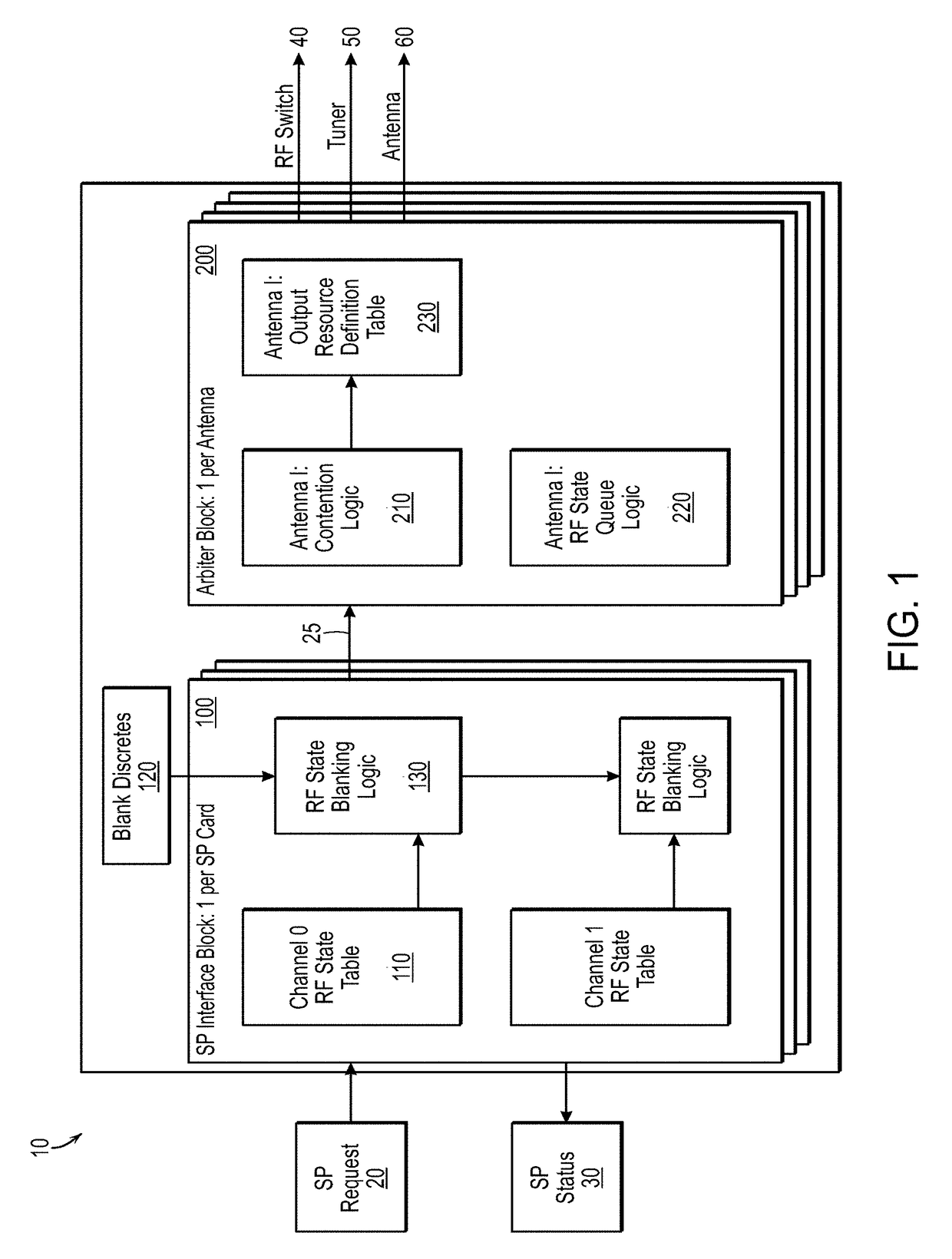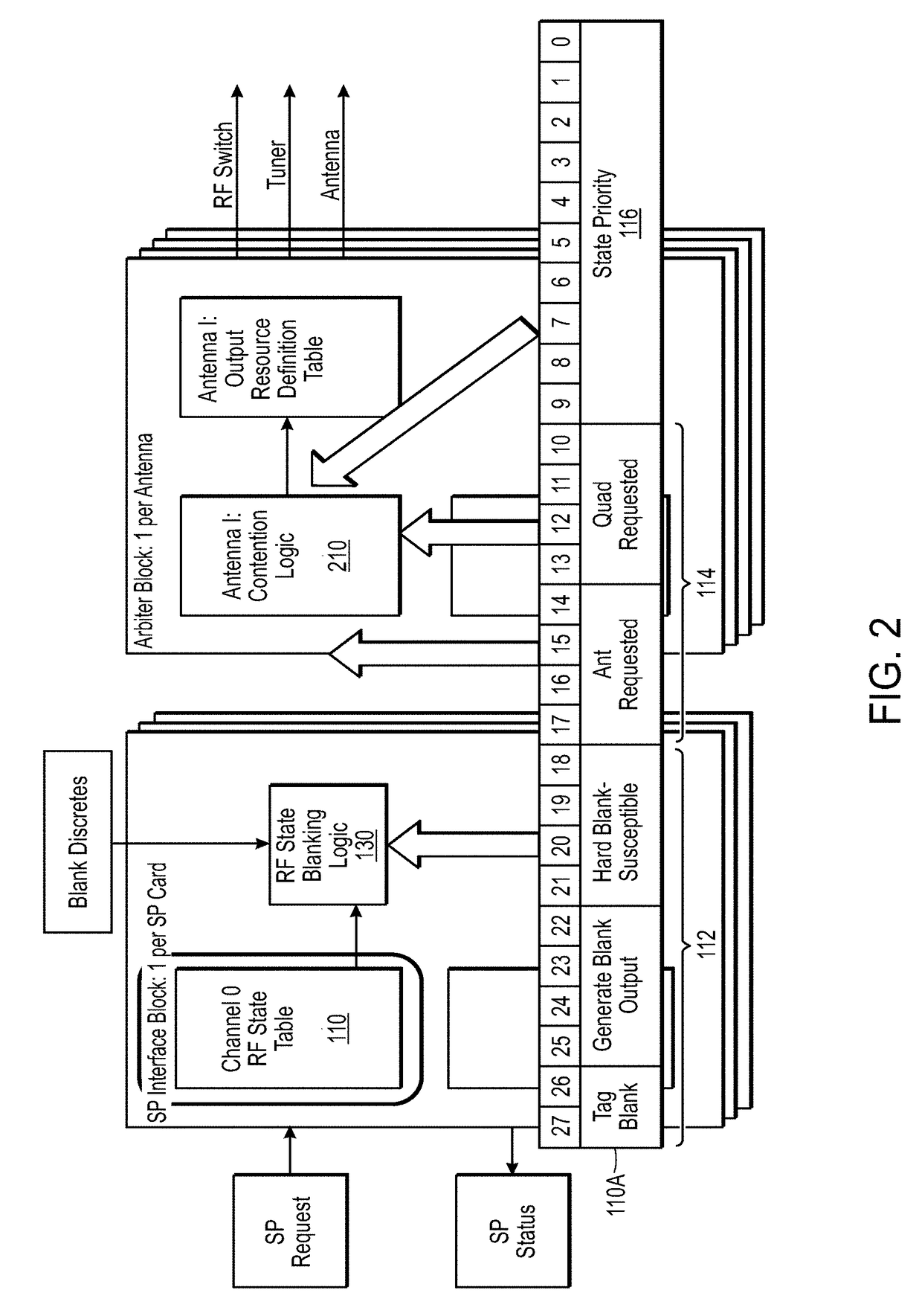Systems and methods for allocating antenna resources
a technology of antenna resources and systems, applied in the field of electronic system allocation of resources, can solve the problems of too large application, too slow for applications, and too large resource inefficient lut approaches, so as to facilitate software/hardware interaction, facilitate arbitration, and facilitate the effect of simple software/hardware interaction
- Summary
- Abstract
- Description
- Claims
- Application Information
AI Technical Summary
Benefits of technology
Problems solved by technology
Method used
Image
Examples
Embodiment Construction
[0020]The present disclosure is directed to an approach to arbitrating, allocating and otherwise managing multiple requests for resources. The approach of the disclosure is applicable in multiple situations in which the number of requests may greatly outweigh the number of resources being requested, and there is a need to switch between the multiple requests and resources very quickly.
[0021]In example embodiments, resources may relate to antenna resources, such as in a pulsed radar system. In a pulsed radar system, jamming or sensing resources, may advantageously be allocated on a sub-pulse level, such that multiple threats can be jammed, and the system can switch between threats very quickly. In order to accomplish this pulsed radar systems make use of a phased array architecture. Thus, in example embodiments, the resources being requested and allocated can include multiple sub-apertures (elements) of a phased-array. In such embodiments, each request for resources may include ident...
PUM
 Login to View More
Login to View More Abstract
Description
Claims
Application Information
 Login to View More
Login to View More - R&D
- Intellectual Property
- Life Sciences
- Materials
- Tech Scout
- Unparalleled Data Quality
- Higher Quality Content
- 60% Fewer Hallucinations
Browse by: Latest US Patents, China's latest patents, Technical Efficacy Thesaurus, Application Domain, Technology Topic, Popular Technical Reports.
© 2025 PatSnap. All rights reserved.Legal|Privacy policy|Modern Slavery Act Transparency Statement|Sitemap|About US| Contact US: help@patsnap.com



